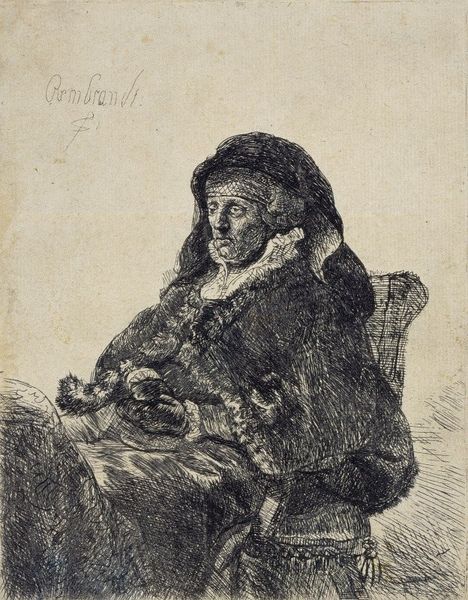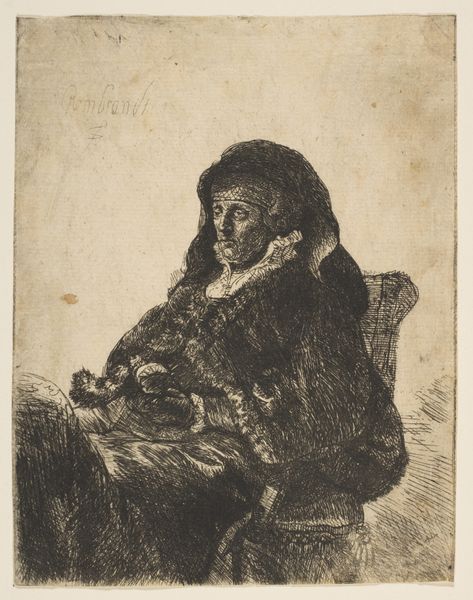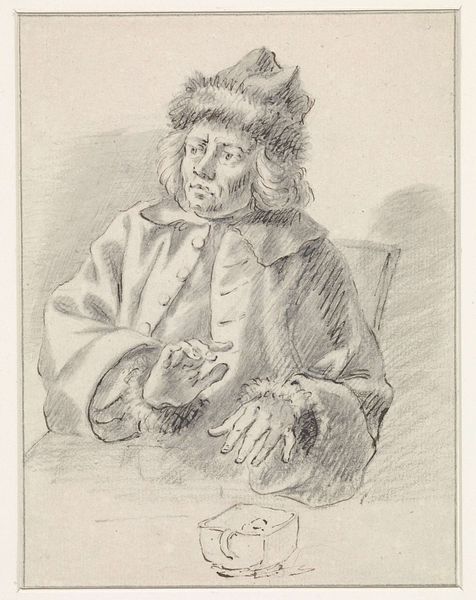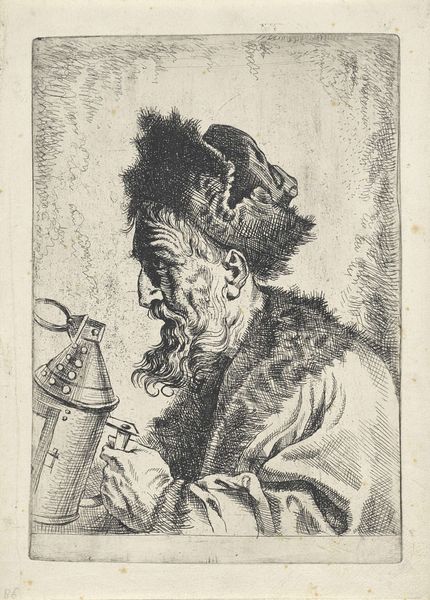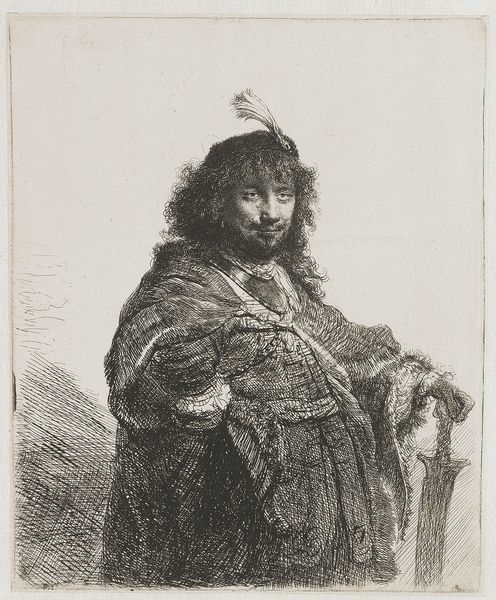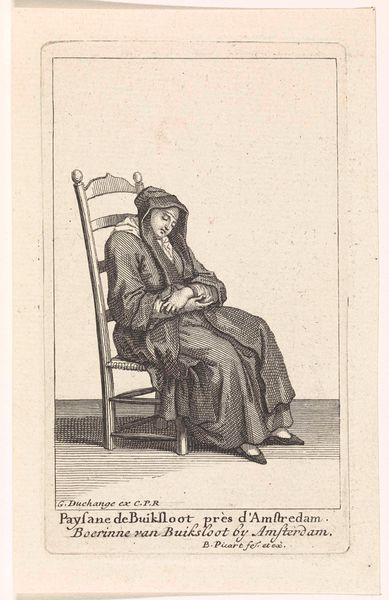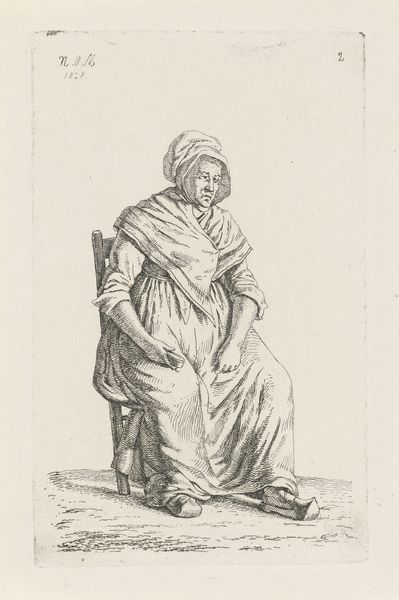
print, etching
#
portrait
#
baroque
# print
#
etching
#
figuration
Dimensions: height 150 mm, width 116 mm
Copyright: Rijks Museum: Open Domain
Curator: Welcome. Before us is an etching from between 1630 and 1700, titled “Widow with Black Gloves.” Its author is currently listed as anonymous, although it very much appears to be an etching made in the circle or by the hand of Rembrandt van Rijn and is currently held here at the Rijksmuseum. Editor: Gosh, the mood is somber, isn't it? Even though it’s a relatively small print, she really commands attention. I’m immediately drawn to the contrast of the fur with the widow’s pale face peering from within. Curator: Indeed. The composition guides our eye first to her face, but note how the textural detail, or the lack thereof, constructs a symbolic tension. The face is rendered with a comparatively lighter touch than the almost aggressively rendered fur mantle enveloping her, implying the harsh realities overshadowing personal grief. Editor: Right, it is interesting to me to ponder that it’s less about memorializing someone, and more about, shall we say, dramatizing the state of being a widow? It's Baroque drama through pure, unadulterated textiles. The meticulous detailing of fabrics and furs isn’t just ornamental. They narrate a life weighed down by societal expectations. The very lines seem to express a psychological weight. Curator: Precisely. Consider the tonal range, deployed across the plane with a precise control of light and shadow. The Baroque influence here is palpable. Note also how this plays out materially within the etching; look closely at the ways in which the work employs density in line to simulate the tactile sensations of fur. These techniques evoke the sensory experience of grief—an encasement within one’s sorrow. Editor: I like your perspective; it’s fascinating how the material translates into the emotional. Looking again, there’s a kind of quiet resistance, though, isn't there? The lift of her chin, the gaze directed beyond the frame – maybe there’s defiance mixed in with that deep sorrow. Curator: I agree. Perhaps we see here less a portrait of grief and more of perseverance—of finding a means of dignified survival. Editor: So, an anonymous artwork opens a window into understanding societal pressures of that era and reveals complex dimensions of bereavement and strength…pretty cool for something etched on a small piece of paper!
Comments
No comments
Be the first to comment and join the conversation on the ultimate creative platform.
